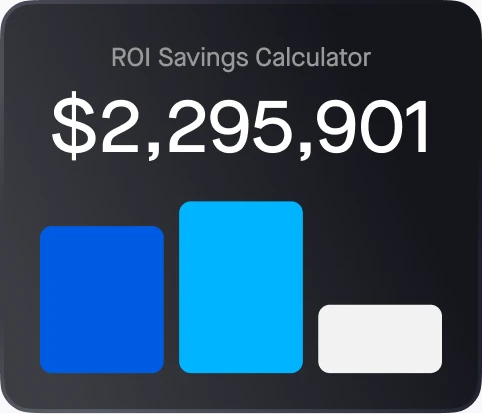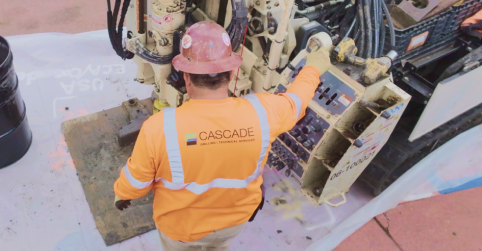Managing a fleet of vehicles is a complex, high-stakes operation. Between fuel expenses, maintenance, labor, insurance, and compliance, fleet-related costs can quickly add up. To stay competitive and profitable, businesses need a clear understanding of where money is being spent — and where it can be saved.
That’s where fleet management cost analysis comes in. This process gives fleet managers visibility into every cost driver and helps identify opportunities for fleet management cost savings across the board.
In this blog, we’ll break down how to conduct a cost analysis for your fleet, what to track, and how advanced fleet management tools — like those offered by Motive — can uncover hidden inefficiencies and unlock meaningful savings.
What is fleet management cost analysis?
Fleet management cost analysis is the process of evaluating all the direct and indirect expenses associated with running a fleet. It goes beyond simply reviewing monthly fuel bills or repair invoices — it’s about identifying trends, inefficiencies, and areas for improvement.
This analysis typically covers:
- Fuel consumption and fuel efficiency
- Preventive and reactive maintenance
- Vehicle utilization and downtime
- Labor and driver management
- Insurance and compliance costs
- Asset depreciation and lifecycle costs
By tracking and analyzing this data, fleet managers can make more informed decisions and implement cost-saving strategies that improve both short-term and long-term performance.
Why fleet cost analysis matters
A well-executed cost analysis helps businesses:
- Control and reduce operational expenses
- Extend the lifespan of vehicles and equipment
- Improve driver productivity and safety
- Avoid unnecessary purchases or rentals
- Increase profitability and return on investment
In competitive industries where margins are tight — like transportation, construction, and field services — fleet cost savings can translate directly into business growth.
Key cost categories to monitor
1. Fuel costs
Fuel is typically one of the largest expenses for fleet operators. Key metrics to track include:
- Fuel spend per mile or per trip
- Vehicle fuel efficiency by make/model
- Idling time and fuel waste
- Fuel theft or misuse
Using GPS tracking and telematics data, fleet managers can monitor usage patterns, optimize routes, and implement driver coaching to reduce fuel consumption.
2. Maintenance and repairs
Maintenance can be broken into two categories: preventive and reactive. A strong cost analysis should include:
- Total maintenance spend by vehicle
- Frequency and type of repairs
- Downtime due to unplanned breakdowns
- Missed or delayed maintenance services
Proactive maintenance scheduling based on engine hours or mileage helps lower long-term repair costs and minimizes vehicle downtime.
3. Labor and driver costs
Labor is another major cost center. Analyzing productivity and performance data helps identify:
- Inefficient route assignments
- Unproductive driver hours
- Overtime and scheduling gaps
- Safety violations or risky behavior that increase costs
By improving route efficiency and reducing idle time, fleets can increase driver productivity without adding headcount.
4. Vehicle utilization and downtime
Underused vehicles lead to unnecessary ownership costs. A utilization analysis should cover:
- Hours or miles driven per vehicle
- Vehicles with frequent or extended downtime
- Seasonal usage trends
- Opportunities for asset reallocation or reduction
When fleet size is optimized based on actual usage, businesses can reduce capital and operational costs.
5. Insurance and compliance
Safety violations, accident claims, and compliance failures can significantly impact insurance premiums. Analyze:
- Insurance claims history
- Policy premiums and deductibles
- Compliance-related fines or penalties
- Driver safety scores and incident rates
Driver behavior monitoring and AI-powered dash cams can help reduce accident frequency and improve your safety profile—leading to lower insurance costs.
Using technology for smarter cost management
Modern fleet management platforms like Motive make cost analysis and savings easier through real-time data, automation, and AI-powered insights.
With Motive, you can:
- Monitor fuel usage and detect inefficiencies
- Track maintenance schedules and reduce downtime
- Use driver behavior data to improve safety and reduce risk
- Analyze vehicle utilization to right-size your fleet
- Automate compliance tracking and reduce administrative costs
All of this data is consolidated into a single dashboard, so fleet managers can spot trends, generate reports, and make proactive decisions based on real insights — not guesswork.
Strategies for fleet management cost savings
- Optimize routes with real-time GPS tracking
Use live traffic data to avoid delays, reduce mileage, and lower fuel use. - Invest in preventive maintenance
Schedule service before breakdowns happen to extend vehicle lifespan and reduce emergency repair costs. - Monitor driver behavior
Coach drivers on safe and efficient habits to reduce fuel waste, wear and tear, and accident-related expenses. - Analyze and right-size your fleet
Identify underutilized vehicles and consider selling or reallocating them to improve ROI. - Use data to negotiate better insurance rates
Demonstrate safety performance through driver data and video evidence to lower premiums.
Conclusion
Fleet management cost analysis is more than a financial exercise — it’s a strategic approach to running a more efficient, more profitable operation.
By analyzing key cost drivers and using tools like Motive’s fleet management platform, businesses can uncover hidden inefficiencies, reduce unnecessary spend, and achieve lasting fleet management cost savings.
Start gaining more control over your fleet’s performance and expenses with the data-driven insights that modern tools provide.




